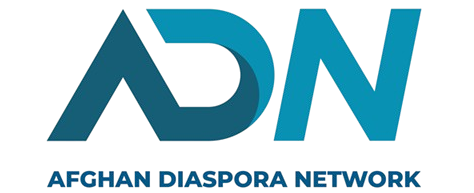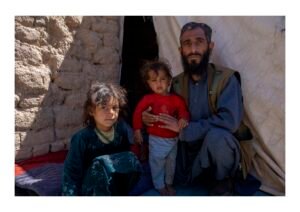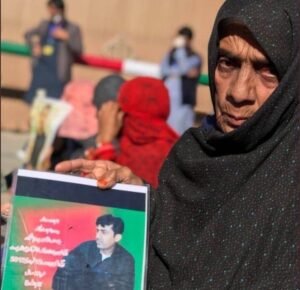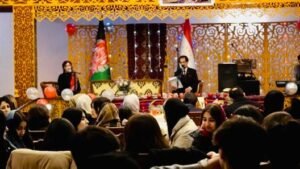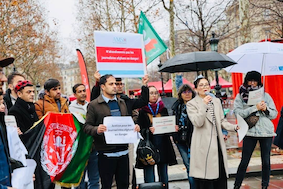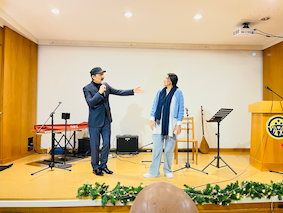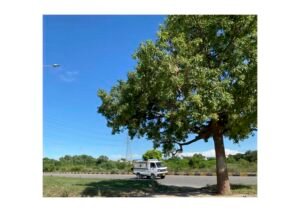Diaspora and more: Civil society engagement of Afghan and Syrian communities in Germany

By Karoline Popp and Dr. Nils Friedrichs
1 Background[1]
1.1 The Afghan and Syrian diaspora in Germany
At the end of 2024, there were around 442,000 Afghans and 975,000 Syrians living in Germany (Table 1). Syrian nationals make up the third-largest group of Germany’s foreign population. Afghan nationals are the seventh-largest. Their immigration histories show important parallels and differences: after historical origins in the 1960s and 1970s, both groups have shown a dynamic development, particularly as a result of refugee arrivals since 2014/15. Many of these Afghan and Syrian immigrants are likely to remain in Germany in the long term. At the same time, their more recent immigration history is characterised by upheavals¾such as the Taliban takeover of Afghanistan in 2021, or the fall of Bashar Al-Assad’s regime in Syria at the end of 2024. These in turn have led to changes in German asylum and integration policy.
Immigration has given rise to new forms of civil society engagement: in Germany, a dynamic field of civil society organisations founded by immigrants from Afghanistan and Syria has grown over the last few decades. The Afghan and Syrian diaspora has organised itself to support the communities living in Germany or the respective country of origin in a variety of ways.
Table 1 Key figures on the Afghan and Syrian populations in Germany
| Afghanistan | Syria | |
| Migration background (as of: 31 December 2023) | ||
| People with an Afghan/Syrian migration background | 476,000 | 1,281,000 |
| Share of the total population with a migration background in Germany | 1.9 % | 5.1 % |
| Foreign nationals (as of: 31 December 2024) | ||
| Afghan/Syrian nationals in Germany | 442,020 | 975,060 |
| Gender distribution | 64 % male / 36 % female | 60 % male / 40 % female |
| Share of the total foreign population in Germany | 3.1 % | 6.9 % |
| Average age | 26.4 years | 26.7 years |
| Average length of stay | 6.6 years | 6.2 years |
Source: Federal Statistical Office. Illustration: SVR scientific staff.
1.2 Research project and method
Political priorities, public interest and academic research on refugees in Germany have focused on arrival, protection and integration. Transnational realities and diaspora activities have received comparatively little attention to date. However, these are of great importance for the immigrants themselves and can impact their integration and participation in Germany. The multi-year research project of the scientific staff of the Expert Council on Integration and Migration (SVR) ‘Transnational Networks and Civil Society Activities in the Context of Forced Migration: The Afghan and Syrian Communities in Germany’ therefore sheds light on transnational networks and the civil society engagement that arise from these diaspora communities in the context of forced migration.
The study ‘Diaspora and more. Civil society engagement of Afghan and Syrian communities in Germany’ poses the following questions:
- What are the particularities of civil society engagement in the context of forced migration and specifically in the case of refugees from Afghanistan and Syria? What differences and parallels exist in this respect between the Afghan and Syrian communities?
- What potential do Afghan and Syrian organisations have and what challenges do they face? How important are they for the integration and participation of both communities in Germany?
- To what extent are the organisations comparable with other migrant and non-migrant civil society organisations in Germany?
To answer these questions, the SVR’s scientific staff conducted qualitative interviews with 15 Afghan and 15 Syrian organisations in Germany between November 2023 and May 2024. All participating organisations were founded by individuals with an Afghan or a Syrian migration background. Their members, volunteers and employees are predominantly from Afghanistan or Syria. In addition, the organisations’ activities focus on Afghanistan or Syria and/or the Afghan or Syrian community in Germany. The aim of the sample was to obtain as diverse a picture as possible of the Afghan and Syrian organisations in terms of their activity profile, size and age.
The interviews included questions about each organisation’s membership structure, funding situation and potential employees. The interviewees also commented on their organisation’s founding history and self-image as well as on specific activities, goals and target groups; the challenges they face; their networks within the diaspora; and their cooperation with other actors. Further questions concerned the situation in Afghanistan and Syria as well as levels of cohesion and possible conflicts within the diaspora.
| Key characteristics of the participating organisationsAfghan organisationsFounded between 1983 and 2022. Six organisations were founded between 2002 and 2020, four since 2021.Seven organisations are active only in Germany, four operate only in Afghanistan and four are active in Germany, Afghanistan and partly in other countries simultaneously. Size: 8 to 600 members 10 of the 15 organisations function on a purely voluntary basis (no paid employees). Main areas of focus: development and humanitarian aid in Afghanistan, support and integration of Afghan immigrants, promotion of languages and culture of originSyrian organisationsFounded between 2005 and 2020. Eight organisations were founded between 2015 and 2017. Seven organisations are active only in Germany, one operates only in Syria and seven are active in Germany, Syria and partly in other countries simultaneously. 10 of the 15 organisations function on a purely voluntary basis (no paid employees).Size: 3 to 200 members Main areas of focus: support and integration of Syrian immigrants, access to education and promotion of science and research in the diaspora, promotion of languages and culture of origin |
1.3 Number of Afghan and Syrian organisations in Germany
The number of Afghan and Syrian organisations in Germany has only been estimated. An initial mapping of Afghan and Syrian organisations was carried out in 2021 as part of research by the SVR’s scientific staff. An update in 2025 using the official register of associations (Vereinsregister) identified 240 Afghan and 198 Syrian associations (as of April 2025). Of these, 39 Afghan and 17 Syrian organisations have been added to the register since 2022. These results, however, do not allow for a conclusive statement about the extent to which all of the associations identified are still active. A complementary web search was used to attempt to approximate an answer. It revealed that 85 Afghan and 48 Syrian associations had an active online presence, e.g., reported on their own activities or published statements or other news in the last 12 to 18 months.
2 Main research findings
2.1 Who are the Afghan and Syrian organisations? Areas of activity, founding histories and development
The Afghan and Syrian organisations participating in this study cover a broad range of activities and many work in more than one area (Fig. 1). In addition, they often combine activities aimed at the country of origin, Germany and a globally dispersed diaspora. Both groups focus on assistance to immigrants from their respective countries, the representation of (and networking among) the community, educational activities and research networks as well as the preservation of the languages and culture of origin. Organisations that work in humanitarian or development aid are slightly more prevalent in the Afghan sample. In contrast, Syrian organisations focus more strongly on political aims, including political education, political change in Syria or the documentation and prosecution of human rights violations in the context of the Syrian conflict.
Fig. 1 Key areas of activity of the Afghan and Syrian organisations
Note: Numbers represent absolute frequency of mention. Organisations are active in more than one area.
Source: Survey of diaspora organisations 2023/24. Illustration: SVR scientific staff.
How and why the organisations were founded, what they focus on and how they have evolved closely mirrors the immigration dynamics of their respective community. Different phases of immigration and integration play a role here, as do the context and developments in the country of origin and in Germany. For example, the large-scale arrival of refugees from Afghanistan and Syria led to the creation of more associations. As immigrants settle in, the needs and interests of the organisations’ target groups in Germany change.
2.2 What resources do the organisations have? Size, collaborators and funding
The organisational structures, financial resources and associated challenges of the Afghan and Syrian organisations are comparable to those of other civil society organisations in Germany. Most of the organisations surveyed are registered associations. Others describe themselves as ‘initiatives’ or ‘virtual networks’. All of the organisations surveyed here rely heavily on unpaid members and other volunteers. Often, it is a small group of individuals that holds the organisation together. Two thirds of the organisations interviewed have no full-time or paid employees: ten Afghan and ten Syrian organisations each state that they operate on a purely voluntary basis.
The organisations generally have few financial resources at their disposal. Public funding is the most important source of money. Some organisations charge membership fees, but these tend to play no more than a small and symbolic role. Donations are an important component, especially for Afghan organisations. Funding from foundations has so far played only a minor role for the organisations surveyed here. Where associations do succeed in acquiring project funding, this often leads to additional challenges: such funding is usually limited to a short period of time, and application procedures and project implementation entail a great deal of administrative and bureaucratic effort. The combination of these circumstances means that in most cases organisations are unable to plan for the longer term, create continuity in their activities or scale up their work qualitatively or quantitatively.
2.3 Where are the organisations situated in civil society? Reach, networking and context
Afghan and Syrian organisations alike maintain networks with other organisations in various formal and informal structures. These include national or regional umbrella organisations, selective cooperation with other civil society organisations and international partners. Overlaps in terms of substance or location (e.g., similar target groups or activities in the same city) are often more important than the reference to a common country of origin. The organisations use numerous online and offline channels to get in touch with their target groups or with the wider Afghan or Syrian community. Initial findings offer some indication as to how present and how widely known the organisations are in their respective communities: an online survey of Afghan immigrants conducted by the SVR’s scientific staff revealed that a quarter of respondents were aware of Afghan organisations. Of these, just under half had already been in touch with one of these organisations. Language also plays a role: people who speak Dari are more likely to contact organisations than those who speak Pashto (for further results of the online survey, see the study by the SVR’s scientific staff ‘Angekommen und transnational verbunden. Afghanische Zugewanderte in Deutschland’).
The Afghan and Syrian organisations are of course also aware of political and social trends and debates in Germany. There is noticeable competition for political and public attention and resources for their work and concerns. They are highly sensitive to debates on foreign and domestic policy¾for example on Germany’s relations with the Syrian transitional government since December 2024 or on deportations to Afghanistan.
2.4 How do the organisations envision the future? Ideas and suggestions for improvement
Many organisations clearly state how their work could be made easier and more effective. Funding is by far the most important aspect here. Many representatives would like to see more funding and better access to funding opportunities. Instead of funding short-term projects, the organisations believe that longer-term approaches would be more appropriate. In their view, associations could consolidate their work and make it more sustainable by providing unearmarked funding or projects that focus on capacity building. Some organisations also emphasise that they could improve the quality of their work if they were able to pay qualified employees and retain them in the long term. In addition to financial resources, several organisations are in need of affordable premises and venues for their events. Furthermore, the organisations would like to see greater recognition of (and moral support for) their work. Finally, many organisations have made various suggestions for better networking: Afghan organisations in particular would like to expand their networks and build new relationships¾among themselves within the diaspora, with potential donors or with other cooperative partners. Afghan and Syrian organisations alike see potential in open structures to coordinate the diaspora in order to increase transparency and exchange within the community, create greater cohesion and improve external representation.
3 Conclusion and recommendations
3.1 Key conclusions
Afghan and Syrian organisations are very diverse and address similar issues.
The Syrian and Afghan organisations are very heterogeneous in terms of their focus, their size, their age or their orientation (i.e., whether they operate locally or nationally in Germany, transnationally in the country of origin or towards a global diaspora). Differences within the respective group are greater than the differences between Afghan and Syrian organisations. At the same time, both groups set similar priorities in their civil society engagement: integration and support for new immigrants, building cohesion within their community and representing it externally, education and research as well as culture and language form some of the main areas of focus.
Their origins and work are shaped by migration trajectories.
To compare the civil society engagement of the Afghan and Syrian communities, it is important to understand the differences in their immigration contexts. These include the conditions in the country of origin as well as German asylum and integration policy. Decades of conflict and displacement dynamics in Afghanistan may explain the active involvement of the Afghan diaspora in Germany and why the number of Afghan organisations in relation to the population with Afghan citizenship is still quite high today. Since the refugee arrivals of 2014/15, Germany’s Syrian population has grown faster than its Afghan one. Compared to Afghan refugees, Syrians were significantly more likely to be granted protection, residence status and access to integration measures. These preconditions and the differences in political and media discourse in relation to Afghan and Syrian refugees have shaped each group’s civil society engagement.
They are ‘diaspora’ and ‘German’ at the same time.
They are diaspora organisations and they are more than that: they also shape German civil and immigration society and actively promote the participation of their respective communities. They are connected to other actors in German civil society, e.g., other civil society organisations in their respective city or region, or as part of nationwide umbrella organisations or thematic alliances. As far as the structural characteristics of Afghan and Syrian organisations are concerned, they are comparable to other civil society organisations: these include, above all, the funding situation, project-based models and the vital role of volunteers. Without sufficient or long-term funding and paid staff, most organisations struggle to build sustainable structures, scale up activities and professionalise. The bureaucratic demands that come with running a registered association in Germany are perceived as particularly burdensome, especially by new immigrants and during the organisation’s start-up phase.
German foreign and domestic policy is of direct concern.
Geopolitical shifts are keenly felt by Afghan and Syrian organisations as a result of their connections to their countries of origin, the circumstances and upheavals there and the transnational links that exist at a personal level or through the organisations. Many feel that they are not receiving the necessary political attention for their concerns. With regard to the political transition in Syria and reconstruction efforts, communication channels have recently been established between German ministries and the Syrian diaspora. Programmes have also been created to support this diaspora’s involvement. Nevertheless, structures for a systematic and forward-looking exchange between the Afghan and Syrian diaspora and German foreign and development policy are lacking. Representatives of the communities are also sensitive to domestic political changes¾increasingly restrictive migration policies, shifts in political discourse and media reporting. One example is the current debate on return and deportation in relation to both countries. The tone in which these debates are sometimes conducted risks demotivating precisely those who are actively committed to cohesion and participation in the immigration society.
3.2 Recommendations
To better fulfil their potential, the organisations would benefit from long-term capacity building. Through longer-term project funding, they could, for example, consolidate activities in which they have already built up expertise. In addition, organisations could make greater use of the existing support and advisory services for civil society organisations (e.g., the Houses of Resources) to gain access to training or to tap into other sources of funding, including external public programmes.
Origin-specific umbrella organisations as well as other (professional) associations could advise their member organisations in this process or refer them to other support structures. They can create visibility, bundle concerns and act as a central point of contact, support and referral for new organisations in the start-up phase. In addition to seeking public funding, umbrella organisations should diversify their funding base, e.g., through philanthropy concepts, by approaching former beneficiaries (so-called alumni funding) or through partnerships with non-governmental institutions. At the same time, public funders and private actors such as foundations should check whether their programmes are designed to be inclusive and accessible.
Afghan and Syrian organisations could continue building networks with organisations, associations and other non-governmental institutions that pursue similar goals, e.g., in the field of education and research. An exchange between Afghan and Syrian organisations working on similar topics could also be useful.
Afghan and Syrian organisations have valuable contextual knowledge, direct contacts and practical experience concerning the country of origin and the respective community in Germany. They can therefore be an important resource and point of contact for policymakers and administrators. Opportunities for exchange and dialogue between diaspora actors and the relevant departments and authorities in the areas of foreign, development, migration and integration policy should thus be considered.
Published by
The Expert Council on Integration and Migration (SVR) gGmbH
Neue Promenade 6
10178 Berlin
Tel.: +49 (0)30 288 86 59-0
Fax: +49 (0)30 288 86 59-11
www.svr-migration.de
[1] This text is a summary of the study ‘Diaspora und mehr. Zivilgesellschaftliches Involvement der afghanischen und syrischen Communitys in Deutschland’ by the scientific staff of the Expert Council on Integration and Migration (SVR). It was prepared and translated as part of the project ‘Transnational Networks and Civil Society Activities in the Context of Forced Migration: The Afghan and Syrian Communities in Germany’. The long version of the study in German, which is available on the SVR website, remains authoritative: https://www.svr-migration.de/publikation/zivilgesellschaftliches-engagement-afghanischer-und-syrischer-communitys-in-deutschland/.
